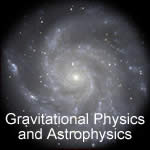
RT
Model is a computer platform developed by Valerio Bozza for the analysis and interpretation of interesting microlensing events in real time. It is based on the VBMicrolensing contour integration code publicly available here.A public version of RTModel is now also available for download on Github
Events modeled in the following years are available:
-
2024new (contains events after the publication of RTModel 2.0)
The index pages contain the list of events modeled in the corresponding year, sorted by category. Clicking on any of the icons, the respective event page opens, with a list of possible models. For each model, the chi square is displayed along with the parameters of the model and all blending fractions (background over source) and baselines for the available telescopes.
In particular
- u0
is the impact parameter of the source trajectory to the
center of mass
- t0 is the time of the closest
approach of the source to the center of mass
- tE is
the Einstein time
- ρ* is the source radius in Einstein
units
- s is the separation of the two lenses in Einstein units
- q is the mass ratio
- α is the angle between the position vector of the first lens to the source
velocity
The source position is thus given in parametric form by
y1 = u0*sin(α)
- (t-t0)/tE*cos(α)
y2 = -u0*cos(α) - (t-t0)/tE*sin(α)
The first lens has mass 1/(1+q). The second has mass q/(1+q). They both lie on the y2 = 0 axis. Their positions are
y1(M1) = - sq/(1+q)
y1(M2) = s/(1+q)
For models including parallax, the two components of the parallax vector are given in the North-East directions. The magnitude of the parallax vector is given by the ratio of the astronomical unit and the Einstein radius projected to the observer plane. If available, the light curve as would be seen by Spitzer is displayed in red, the light curve as seen by Kepler is displayed in blue, and that as seen by Gaia in green.
For models with orbital motion, the orbit is assumed to be circular. The three components of the orbital velocity are expressed in terms of (ds/dt)/s, dα/dt and (dsz/dt)/s.
For all use of these models and for any questions, please inquire Valerio Bozza